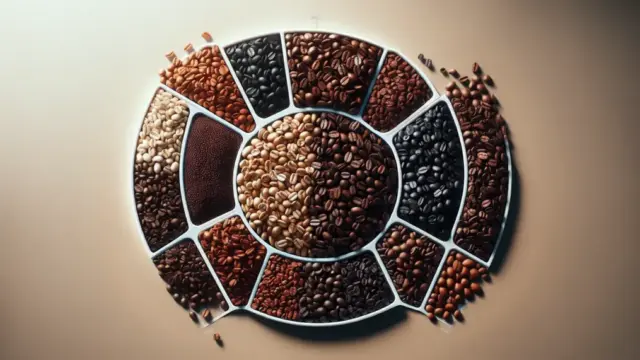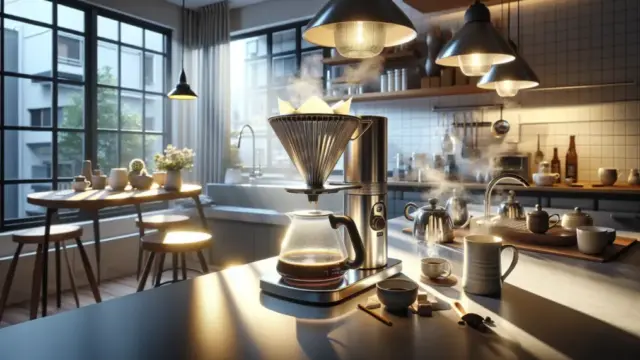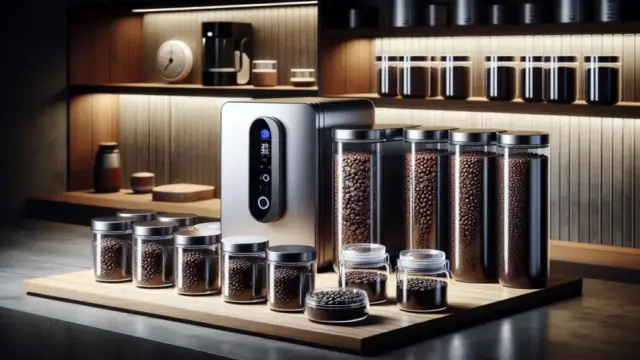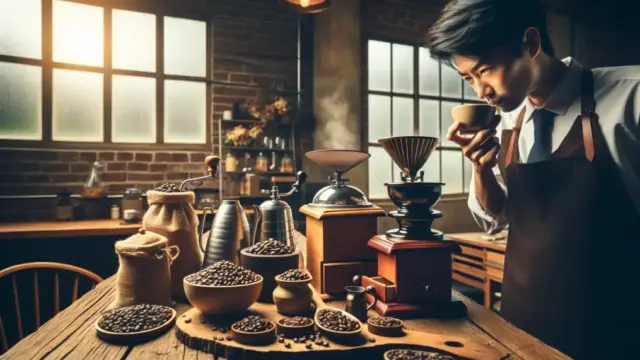South American coffee captivates many with its rich flavors and unique characteristics. The coffee beans cultivated in this vibrant region offer distinct tastes and aromas that create a special experience for every coffee lover. In this article, we’ll delve into the allure and traits of South American coffee, exploring how to truly savor it.
By understanding how to choose coffee, the roasting process, and different brewing methods—along with appreciating the cultural background of South America—you can enhance your coffee enjoyment even further. So, are you ready to explore the fascinating world of South American coffee with us?
- An overview of key coffee-producing regions in South America and their unique traits
- Tips for selecting coffee beans and what to look for when purchasing
- Insights into South American coffee culture and the various ways it’s enjoyed
The Diversity and Characteristics of South American Coffee
South America is renowned for its coffee production, with a rich variety of flavors and aromas that captivate coffee lovers around the globe. The coffee from this region is influenced by distinct climates and soil types, each contributing unique characteristics. In this section, we’ll explore the main coffee-producing areas in South America and the distinctive qualities of the coffee cultivated in each region.
Major Coffee-Producing Regions in South America
Several countries in South America are famous for their coffee production, with Brazil, Colombia, and Peru standing out as particularly noteworthy. Brazil holds the title of the world’s largest coffee producer, cultivating a wide range of varieties. Meanwhile, Colombia is celebrated for its high-quality Arabica coffee, known for its rich acidity and sweetness. Peru, on the other hand, is recognized for its thriving organic coffee industry, earning praise for its sustainable farming practices.
Each region boasts its own unique climate and soil conditions, which significantly impact the flavor of the coffee. For instance, Brazilian coffee often features nutty and chocolatey notes, while Colombian coffee offers a fruity and smooth profile that many find appealing.
- Brazil is the world’s largest coffee producer
- Colombian coffee is characterized by high-quality Arabica beans
- Peru has a strong focus on organic coffee production
The Unique Characteristics of Coffee from Each Region
The diverse flavors and aromas of South American coffee invite coffee enthusiasts to explore and compare different varieties. For example, Brazilian coffee is known for its sweetness and body, making it very approachable. In contrast, Colombian coffee is loved for its pleasant acidity and fruity aroma, appealing to a wide audience. Peruvian coffee, grown in nutrient-rich soils, boasts natural sweetness and rich flavors that stand out.
Understanding the coffee from each region can help you discover the flavors that best suit your palate. By learning about the characteristics of South American coffee, you can elevate your coffee time to something truly special.

If you’re intrigued by this topic, be sure to check out our article “Why Colombian Coffee is Loved Worldwide” to delve deeper into the appeal of Colombian coffee. You’ll gain further insights into its unique flavors and production background.
- Brazilian coffee offers sweetness and body, making it easy to drink
- Colombian coffee features a fruity profile with pleasant acidity
- Peruvian coffee is distinguished by its natural sweetness and rich flavors
How to Choose Coffee Beans
To truly enjoy coffee, the first step is selecting the right beans for your taste. South American coffee offers a wide variety, each with its own unique flavor profile. Understanding how to choose coffee beans can help you discover the perfect brew that suits your palate. In this section, we’ll explore different types of coffee beans, their characteristics, and key points to consider when buying.
Types of Beans and Their Characteristics
There are mainly two types of coffee beans produced in South America: Arabica and Robusta. Arabica beans are known for their smooth texture and rich flavors, commonly found in coffees from Colombia and Peru. On the other hand, Robusta beans have a stronger bitterness and a fuller body, primarily grown in Brazil. Robusta beans also contain higher caffeine levels, making them a popular choice for espresso and blends.
Since the flavor and aroma can vary greatly between different beans, it’s essential to consider your own preferences when selecting. If you enjoy a bit of acidity in your coffee, you might want to try Arabica beans. Conversely, if you’re looking for a robust flavor, Robusta beans would be a great option.
- South American coffee beans include Arabica and Robusta
- Arabica is known for its smooth texture and rich flavors
- Robusta is characterized by its strong bitterness and full-bodied taste
Key Points When Buying
When purchasing coffee beans, there are a few important factors to keep in mind. First, check the roast level. The roast can range from light to dark, and each level significantly affects the aroma and flavor. Choosing your preferred roast will enhance your coffee enjoyment.
Another crucial aspect is the freshness of the beans. Freshly roasted beans have a vibrant aroma and a more pronounced flavor. Always take a look at the roast date when buying and aim for the freshest beans available. Lastly, it’s vital to purchase from a reputable retailer. To ensure quality, consider checking reviews and ratings before making your purchase.
- Check the roast level to select your preference
- Look for fresh beans by checking the roast date
- Buy from a trusted retailer to ensure quality
The Art of Roasting and Brewing Coffee
To fully appreciate the allure of coffee, mastering the techniques of roasting and brewing is essential. Roasting is a critical process that defines the flavor and aroma of coffee beans, while brewing determines how those flavors are extracted. In this section, we’ll explore the fundamentals of roasting, its impacts, and various brewing methods in detail.
Understanding Roasting and Its Effects
Roasting refers to the process of heating raw coffee beans to bring out their aroma and flavor. The degree of roast significantly alters the taste of the coffee. Light roasts tend to be fruity with noticeable acidity, while dark roasts offer a bolder bitterness and richness. South American coffees, in particular, exhibit their unique characteristics through roasting, making it vital to choose a roast level that suits your personal preference.
The time and temperature of the roasting process can also create subtle differences in flavor. As the roast progresses, the color of the beans changes, and their aroma evolves. By honing your roasting skills, you can enjoy a cup of coffee that perfectly aligns with your ideal taste.
- Roasting determines the aroma and flavor of coffee beans
- Light roasts are fruity and acidic
- Dark roasts have a stronger bitterness and richness
Exploring Brewing Methods
There is a wide array of brewing methods available, each with its own distinctive characteristics. Popular brewing techniques include drip, French press, and espresso. The drip method is easy to use and effectively extracts the flavor of the beans. French press allows for the extraction of the coffee’s oils, resulting in a rich taste. On the other hand, espresso is brewed quickly under high pressure, producing a concentrated and creamy coffee experience.
Each brewing method can significantly alter the flavor profile of your coffee, so trying out different techniques can be beneficial. By discovering the brewing method that best suits your taste, you can delve deeper into the unique flavors of South American coffees.
- Brewing methods include drip, French press, and espresso
- Drip brewing effectively extracts the flavor of the beans
- French press allows for a rich and flavorful experience
The Cultural Background of South American Coffee
South American coffee is not just known for its rich flavors; it also carries a significant cultural heritage that adds to its allure. Deeply embedded in the region’s history, coffee is enjoyed in various ways that reflect local customs and traditions. In this section, we’ll explore how coffee has shaped the lives and culture of South Americans, as well as the distinct drinking styles found across different regions.
The Role of Coffee Throughout History
In South America, coffee is much more than just a beverage. Historically, it has served as a symbol of social interaction and commerce. During the 18th century, coffee began to flourish in the region, particularly in Brazil and Colombia, where production ramped up significantly. Consequently, coffee became an economically crucial crop, central to agriculture and trade.
Moreover, coffee has always been integral to social gatherings. Enjoying coffee at home or in cafés remains a cherished way to foster communication. Gathering over a cup of coffee strengthens bonds among friends and family, making it a vital part of social life.
- Coffee as a symbol of interaction and commerce
- Increased production in South America during the 18th century
- A role in enhancing communication during social gatherings
Regional Variations in Drinking Styles
Across South America, coffee is enjoyed in diverse ways that reflect each culture’s unique characteristics. For instance, in Brazil, café com leite (coffee with milk) is a breakfast staple, beloved for its creamy texture. In contrast, Colombians often prepare their coffee using a careful drip method, savoring its pure flavor without any frills.
In Peru, it’s common to enhance coffee with sugar or spices, creating a distinctive taste profile. By understanding these regional variations, you can gain a deeper appreciation for the rich coffee culture that thrives throughout South America.
- Café com leite is popular in Brazil
- Colombians enjoy coffee brewed simply with a drip method
- Peruvians often add sugar or spices for a unique flavor
Conclusion
In this article, we’ve delved into the unique characteristics and allure of South American coffee. This region is a diverse hub for coffee production, with different flavors and cultures emerging from each area. By learning about roasting and brewing techniques, you can deepen your appreciation for coffee and find the perfect cup that suits your taste.
Additionally, it’s important to recognize that coffee is not just a beverage; it plays a significant role rooted in the culture and history of South America. Gathering around coffee with family and friends fosters connection and creates heartwarming moments.
- South American coffee has distinct characteristics based on the region
- Understanding roasting and brewing techniques enhances your coffee experience
- Coffee is cherished as part of culture and communication
So, take a moment to savor the charm of South American coffee and enjoy your own personalized cup. We’d love to hear about your coffee experiences and thoughts in the comments!









































































Comment